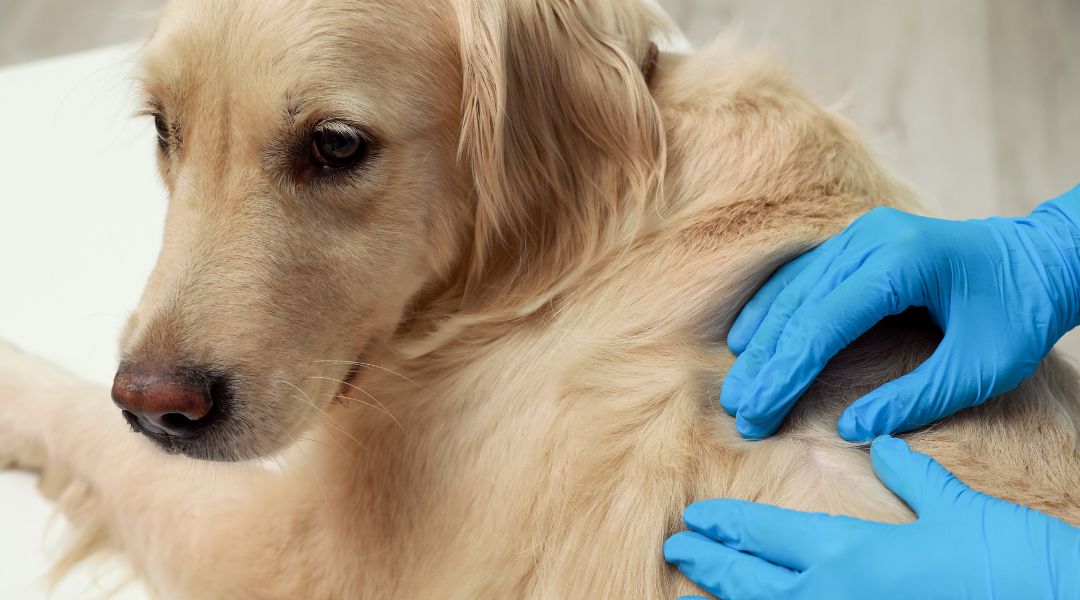Pet Skin Condition Support Information

Many pet skin conditions are allergy based. This can be an allergy to fleas (flea bite hypersensitivity), grasses or dust mites (contact allergies), foods (less common) or Atopy – a syndrome where pets are allergic to every day things including the above due to a barrier/skin dysfunction. These pets often have chronic/multiple ear/eye/skin infections. This skin dysfunction is primarily a reduction in or lack of protective oils in the skin.
Support for these animals with a skin condition is a three pronged approach:
1. Treat the skin infection/inflammation
If your pet currently has serve redness, lumps/bumps, cuts from self scratching which have become inflamed and infected, this needs to be address first.
- Test
for mites and check for fleas
- Antibiotic
course if heavily infected wounds
- Topical
Antibiotic/Cortisone cream
- Possibly
oral cortisone depending on the severity
2. Treat the environment
It is recommended you start a food trial to check if your pet has a food allergy (usually a meat protein). Use a specially designed non-allergen food or a novel protein such as kangaroo or rabbit for a minimum of six weeks. During this time your pet should NOT have any other foods, including treats, human food and flavoured wormers.
If your pet has a flea allergy, treat the pet with a spot-on or oral flea treatment and even consider daily flea tablets (Capstar) for heavy infestations.
Cleaning the environment of flea eggs/larvae/pupae is 95% of the work, by weekly HOT wash (>55’C) everything you can that the pet is in contact with and then thoroughly vacuuming everything else. Don’t forget the seat in the car and even your floorboards and around the architraves.
If your pet has a contact allergy, avoid grasses especially in Spring and Summer, as much as possible.
3. Treat the barrier (skin)
Depending on the severity of the contact allergy or Atopy, you can do some or all of these points. The further down the list you go, the more severe the allergy.
- Keep flea prevention up to date. Pets with allergies can be hypersensitive to flea saliva.
- Weekly WATER wash to remove allergens from the coat. Followed always by a leave in conditioner with Aloe Vera/Oatmeal/Ceramides. Never wet the head, it increases the risk ear infections.
- Omega 3/6 oil in/on their food. Eg Dermega Omega oil. 1000-2500mg fish oil, per day, depending on the dog size.
- Foot licking – try NIGHTLY water washes of feet only à leave in conditioner on feet.
- IF you really must wash your pet in shampoo, ONLY a shampoo with Aloe Vera/Oatmeal/Ceramides and then the leave in conditioner. ANY shampoo strips oil from the skin so don’t over bathe your pet!
- Un-perfumed Sorbelene on their bare bits/feet in the MORNING as a film barrier may help.
- Cortavance® Spray ONCE daily for maximum seven days in a row. Spray on the affected areas following the package instructions. Use a make-up pads to wipe spray on feet.
- Short term oral cortisone (if not on Apoquel) or antihistamines use. Monitor for side effects.
- Long term use of Cytopoint ® (antibody injection) for blocking the signals to the brain that trigger itching in Atopy/allergies.
- Long term use of Apoquel® (immunemodulator) to stop itching and relieve inflammation at the site in Atopy/allergies.
Looking for further advice for a pet skin condition? Please contact our team on 9707 3855 to book an appointment with one of our veterinarians.
